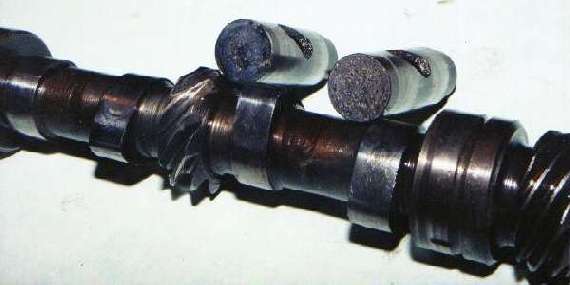The MGA With An Attitude
A brief description of the engine camshaft and tappets and their operation. In general it is the job of the cam to open and close the valves at the appropriate time to allow the fuel/air mixture from the carburetors into the cylinders, and the exhaust gases to escape from the cylinders. The cam is driven with a timing chain at the front of the crankshaft and turns at 1/2 the speed of the crankshaft. For each valve in the cylinder head there is a lobe on the camshaft. This lobe is shaped like a circle with a bump on one side (roughly speaking). The base circle is concentric with the rotational axis of the camshaft, and the height of the bump above that base circle produces the lift when it pushes upward against the valve lifter (commonly known as a tappet). For the stock MGA the base circle is approximately 1-1/8 inch diameter, and the height of the lobe above that base circle is approximately 1/4 inch. I will not dwell on the exact dimensions, because it is common to substitute a cam with a slightly different profile to change the performance characteristics of the engine. I will keep this discussion general in nature.
The tappet is a cylindrical steel part with a nearly flat bottom surface that rides on the cam lobe. When new, the bottom end of the tappet is slightly crowned. The tappet is also mounted a little off center from the cam lobe. This combination of the crown on the tappet and the off center mounting produces a particular wear pattern on the cam where the can lobe becomes slightly crowned. Mind you that this wear in the early hours of engine operation is quite a small amount, and the crowning effect on the cam lobe is generally not discernable by the human eye, but it is enough to present a slightly angled mating surface to the tappet. This results in an off center contact point on the tappet and causes the tappet to rotate in operation. This rotation of the tappet induces even wear all around the bottom surface of the tappet, and increases the life of both the tappet and the cam lobe. Eventually the cam lobe and tappet wear in together such that the contact between them is a straight line. At that point the oil film on the parts greatly decreases the wear rate, and the cam and tappets can be expected to last well in excess of 100,000 miles. |
